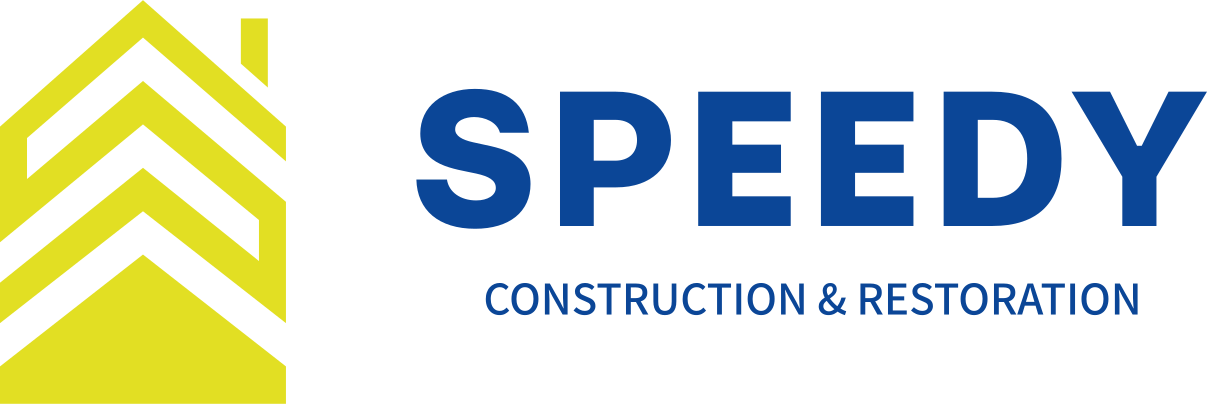Sewage intrusion is one of the most disruptive and hazardous forms of property damage, and its effects reach far deeper than surface-level contamination. When property owners rely on Professional Water Damage Restoration Services GTA, they often do so because sewage exposure carries risks that cannot be neutralized through general cleaning. The combination of wastewater, bacteria, decaying debris, and moisture creates conditions that threaten structural materials, indoor air quality, and occupant health. Because of this, sanitization stands as the central requirement for restoring a property to a condition safe for re-entry.
Sewage backup is often sudden, unpleasant, and aggressive in how quickly it spreads. Floors, drywall, insulation, baseboards, subflooring, and belongings are exposed to contaminated water within seconds, and every minute of delay allows the water to seep deeper into porous materials. But beyond the physical mess is the invisible danger—microorganisms and contaminants that thrive in damp organic environments. These include bacteria, fungi, viruses, and parasite eggs commonly found in blackwater contamination. Without proper sanitization, a cleanup attempt simply hides the hazard rather than eliminating it.
Why Sewage Backup Is More Dangerous Than Standard Water Damage?
Water damage alone is concerning, but sewage water belongs to a completely different category. The concentration of pathogens can create a health emergency even after the visible water is removed. For homes and businesses, this type of incident disrupts daily operations, threatens long-term asset value, and forces occupants to vacate until the environment is restored.
Sewage water typically contains:
- Bacteria such as E. coli, Salmonella, and Shigella
- Viruses from human waste
- Mold spores
- Fats, oils, and greases
- Industrial chemicals
- Organic waste and decaying matter
- Parasite eggs
The moment sewage enters an indoor space, it transforms that environment into a high-risk zone. Even brief contact with contaminated surfaces can lead to skin irritation, respiratory problems, or gastrointestinal illness. Simply attempting to remove the water with household tools spreads contamination instead of isolating it.
Structural materials become incubators for microbial growth, and no surface exposed to sewage should be considered safe without sanitization. Even hard surfaces such as tiles or concrete can harbor microscopic contaminants in surface pores.
Why Sanitization Holds the Highest Priority in Sewage Restoration?
Sanitization is not a finishing step—it is the foundation. Without it, drying, repairing, or deodorizing becomes meaningless because the underlying contamination remains active. The objective is not only to remove visible waste but to eliminate pathogens thoroughly enough that the property can be safely occupied.
Sanitization is essential because it:
- Eliminates microbial colonies
- Prevents cross-contamination
- Protects indoor air quality
- Stops mold amplification
- Ensures building materials are safe to preserve
- Reduces the long-term risk of illness
- Restores a habitable environment
No amount of ventilation, dehumidification, or cosmetic cleaning can replace proper sanitizing. Pathogens remain viable even after drying, meaning untreated surfaces pose a silent risk.
Sanitization builds the safety foundation for all other restoration phases. Without it, no reconstruction or re-entry should occur.
Immediate Hazards Created by Sewage Exposure
Sewage water produces three primary threats: contamination, moisture, and structural decay. The longer the contamination remains in place, the more severe these risks become.
1. Severe Microbial Presence
Sewage water provides the perfect breeding environment for microorganisms. Bacteria multiply quickly when moisture and organic matter are readily available.
Respiratory infections, skin conditions, fungal exposure reactions, and gastrointestinal illnesses become real possibilities. Even individuals without health conditions may experience symptoms, while children, seniors, and those with weakened immune systems face greater risks.
2. Damaging Moisture Penetration
Sewage water saturates porous materials deeply. Carpets, drywall, insulation, wood flooring, fabric furniture, and stored items absorb water rapidly.
The moisture left behind:
- weakens structural materials
- encourages mold colonization
- traps bacteria within wall cavities
- promotes wood decay
- compromises subfloor integrity
This makes sanitization more difficult because contaminants can migrate beyond the initial spill zone.
3. Long-Term Structural Instability
Once organic contaminants and moisture interact with materials such as wood or drywall, deterioration begins. Sewage accelerates damage compared to clean water because contaminants feed microbial activity, speeding up decay.
If sanitization and drying are delayed, structural repair costs escalate dramatically.
What Does Proper Sanitization Involve After Sewage Backup?
Certified restoration specialists use structured protocols to eliminate all forms of contamination. The methods used are selected based on contamination level, material type, and moisture absorption depth.
1. Removal of Non-Salvageable Materials
Sanitization begins with separating what can be saved from what must be discarded. This includes:
- soaked insulation
- waterlogged drywall
- contaminated carpet and padding
- saturated textiles
- damaged content items
Anything porous that has absorbed sewage water typically cannot be restored safely. Removing these materials prevents them from becoming microbial hotspots.
2. Extraction and Containment of Contaminated Water
Industrial extraction equipment removes standing water far more efficiently than household tools. Containment procedures ensure no contaminated droplets spread into unaffected areas.
3. Application of Hospital-Grade Disinfectants
Restoration teams rely on EPA-registered disinfectants capable of eliminating:
- bacteria
- viruses
- parasites
- fungi
- odor-causing microorganisms
These solutions are applied using sprayers, foaming tools, and direct wipe-down methods to ensure every surface receives thorough treatment.
4. Deep Cleaning of Harsh Contaminants
Scrubbing, pressure rinsing, abrasive cleaning, and specialized surface treatments target contaminants trapped in pores or joints. Sanitization requires more than wiping surfaces—it requires breaking microbial bonds that cling to materials.
5. Structural Drying With Industrial Equipment
Moisture must be removed before sanitization chemicals can work effectively. Professionals use:
- high-velocity air movers
- commercial-grade dehumidifiers
- specialty wall-cavity drying systems
Dry conditions help prevent future microbial growth and allow materials to stabilize.
6. Anti-Microbial Treatments for Long-Term Protection
After drying, anti-microbial coatings are applied to prevent recurring contamination. These solutions create a protective barrier on surfaces, ensuring the environment remains safe even after reconstruction begins.
Why Indoor Air Quality Depends on Proper Sanitization?
Sewage exposure not only affects surfaces—it compromises air quality for weeks or months without proper intervention. Moisture, bacteria, and organic gases mix to create a toxic indoor atmosphere.
Without sanitization, the air becomes contaminated with:
- airborne bacteria
- mold spores
- volatile organic compounds (VOCs)
- sulfur-based gases
- ammonia odors
- gases from decaying organic waste
These pollutants spread into HVAC systems, vents, and ductwork, meaning even areas untouched by water become unsafe. Sanitization and deodorization methods help restore clean breathing conditions.
Health Issues That Can Occur When Sanitization Is Ignored
Sewage contamination is not the type of problem that improves with time—it worsens. Each day without sanitizing increases the risk of short-term and long-term health complications.
Possible conditions include:
- bacterial infections
- respiratory inflammation
- sinus irritation
- allergic responses
- fungal exposure symptoms
- gastrointestinal illness
- skin irritation
- long-term mold-related respiratory effects
Ignoring sanitization can turn a one-time incident into a chronic environmental health hazard.
The Role of Sanitization in Preventing Mold Growth
Mold begins forming within 24–48 hours after water intrusion. Sewage water accelerates this timeline because of the organic nutrients it carries.
Effective sanitization prevents mold by:
- eliminating microbial food sources
- stopping mold spores from attaching to damp surfaces
- removing moisture that allows colonies to grow
- reducing airborne spores
Sanitization is the strongest defense against long-term mold infestation.
Sanitization Also Protects Structural Materials
Many property owners focus on health concerns but overlook structural risks. Proper sanitizing extends the lifespan of building materials by stopping decay.
Without sanitization, the following damages are likely:
- rotting wood
- softening drywall
- weakened framing
- rusting metal
- stained concrete
- failing adhesives
Sanitization stabilizes materials so they can either be restored or replaced safely.
Why Professional Sanitization is More Effective Than DIY Attempts?
Sewage cleanup should never be attempted with household cleaning supplies. DIY attempts often worsen contamination by spreading bacteria unintentionally.
Professionals offer advantages such as:
- Controlled safety zones
- Commercial sanitizers are not sold to the public
- equipment capable of penetrating deep contamination
- proper containment and disposal
- moisture detection tools
- complete PPE protocols
- air scrubbing and filtration systems
These tools and methods ensure that all contaminants—seen or unseen—are eliminated.
Top Reasons Sanitization Must Happen Immediately
Sewage backup is a race against time. Delays increase health risks and create greater restoration costs.
Below are the urgent reasons sanitization must begin immediately:
1. Rapid microbial multiplication
Contaminants grow exponentially.
2. Fast-spreading moisture absorption
Water moves deeper into walls, flooring, and belongings.
3. Higher structural repair costs
The longer the materials stay contaminated, the fewer can be saved.
4. Stronger odors that penetrate permanently
Odors embed into materials where they become hard to remove.
5. Mold growth begins quickly
Moisture and bacteria accelerate mold activity.
6. Air quality declines
Toxins, gases, and spores spread continuously.
How Sanitization Supports a Faster Return to Normalcy?
Once sanitization is complete, other restoration steps—drying, cleaning, odor removal, and reconstruction—can progress with confidence. Occupants can return sooner because the environment has been stabilized against health risks.
A property is considered safe only when:
- Contaminated materials are removed
- All surfaces have been sanitized.
- Moisture levels reach safe ranges
- Air quality returns to acceptable levels
- Odors are neutralized
- No microbial activity remains
Sanitization is the milestone that transforms a hazardous property back into a living or working space.
The Link Between Sanitization and Insurance Approval
Insurance providers often look for proper sanitization steps before approving claims or covering repairs. This is because failure to sanitize leads to secondary damage such as mold, structural decay, or recurrence of contamination—problems that increase claim costs.
Professionally documented sanitization with proper moisture readings, chemical logs, and contamination reports helps support the claim process.
Why Sanitization Must Be Verified Before Re-Entry?
Even when a property appears clean, contamination may still be present. Verification ensures that sanitization has removed all dangerous substances.
Verification typically includes:
- ATP testing
- moisture mapping
- visual inspection
- odor checks
- microbial assessments
Occupants should only re-enter when the environment meets safety standards.
Conclusion
Sewage backup water damage creates one of the harshest indoor environments a property can face. The mixture of pathogens, organic waste, humidity, and structural exposure demands immediate and thorough sanitization. Without this crucial step, the space remains hazardous, no matter how dry or visually clean it appears.
Sanitization neutralizes the contamination at its source, protects structural materials, restores air quality, prevents mold, and establishes the foundation for a safe return. When this process is executed with precision, property owners regain a healthy, stable, and fully restored indoor environment.

